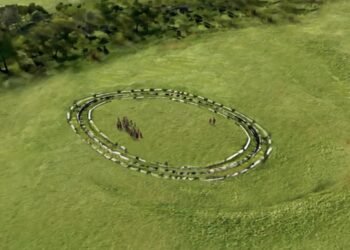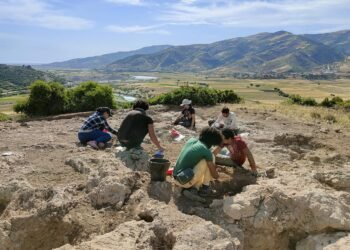Archaeologists, led by Marcin Piotrowski from the company Gorgona, unearthed two rare eagle emblems bearing the monogram “SAR” (Stanislaus Augustus Rex), symbolizing the First Polish Republic and its final monarch, Stanisław II August, at the historic Dubienka battlefield, where Polish forces under the command of General Tadeusz Kościuszko defended their homeland against Russian forces in 1792 and 1794.

These emblems, originally adorning the caps of Polish soldiers, are seen as highly valuable artifacts that illuminate the military history of the Polish–Lithuanian Commonwealth and its struggle for sovereignty in the face of Russian aggression.
The Battle of Dubienka, fought on July 18, 1792, was a key conflict in the Polish-Russian War, during which Kościuszko, commanding roughly 5,300 Polish soldiers, fended off the advance of General Mikhail Kakhovsky’s 25,000-strong Russian force near the Bug River. Despite managing to hold off the Russians and inflicting around 4,000 casualties, the Polish forces, low on supplies and weary, ultimately withdrew to avoid encirclement. Not long after, Poland was forced into capitulation and joined the pro-Russian Targowica Confederation, marking a setback in Poland’s fight for independence. The presence of the “SAR” monogrammed eagles, along with other artifacts, has reaffirmed that soldiers from the royal armed forces fought valiantly in this significant encounter.
Marcin Piotrowski, head of the archaeological team, remarked on the rarity and historical significance of these discoveries in an interview with the Polish news agency PAP. “Until now, only one such artifact has been documented in Poland; it was found on a battlefield in Oronne and is held in the Polish Army Museum collection. During our search in Dubienka, in just one day, we found four fragments, which belong to at least two eagle emblems,” Piotrowski explained. He further noted that “their presence on the battlefield at Dubienka indicates that soldiers from the royal armed forces fought here.”
The recent archaeological season, which began in June and concluded in November, also yielded nearly 1,000 additional artifacts, including cannonballs, rifle and pistol bullets, Polish, Russian, and Austrian coins, military belt buckles, and ornamental buttons, which likely belonged to officers. Some of the finds, such as numbered buttons, hint at the participation of specific Polish military regiments, such as the 13th and 17th Crown Army regiments, in the battles at Dubienka and Uchańka.
The excavation project also benefitted from the efforts of local volunteers and researchers armed with metal detectors, who meticulously searched key areas on the battlefield. Their work provided insights not only into the distribution of military artifacts but also into the technical infrastructure supporting the soldiers, as some items were discovered along roads and rear areas rather than directly within artillery fortifications. Piotrowski pointed out that these findings “help us better understand the overall organization of the battlefield.”
Additional geophysical studies have also been conducted to locate remnants of redoubts built under Kościuszko’s orders as defensive structures prior to the battles. The findings are still being analyzed in laboratory settings, with results expected in the coming months. These studies aim to further reconstruct the fortifications and strategic maneuvers employed by Kościuszko’s forces.



























